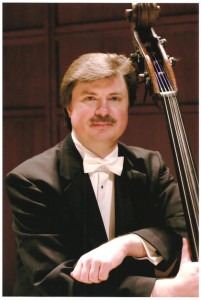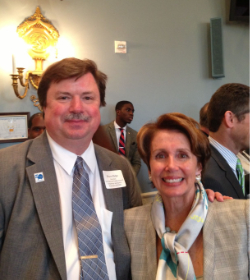
Photo credit: Michael Zirkle
In a time when we all are confronted with a daily onslaught of pessimism, some good news could be found in the release of the BCA (Business Committee for the Arts) National Survey of Business Support for the Arts, conducted by our friends at Americans for the Arts. The survey, which can be obtained here, found that arts contributions continue to recover from the depths of the recession.
From 2009 to 2012, corporate giving to the arts increased by 18%, and the number of businesses that give to the arts increased from 28% to 41%. The median contribution is also the largest it has been in six years, and 17% of the businesses that support the arts expect their giving to increase in the next year. Still, within our field, there remains great resistance from many managers and boards to the idea that recovery for our orchestras can even be contemplated, and the refrain “our community cannot support a great symphony orchestra” is repeated thoughtlessly in city after city.
Peter Pastreich was recently quoted in the New York Times saying: “If I dropped in on the United States from Mars and heard, ‘What a disaster!,’ what would I see?…Every little town has an orchestra…. There are so many places with really dynamic stuff going on. The trouble does not reflect itself in the concert hall. This is an amazingly vibrant musical life.”
So why is there so much resistance to discussing the fundraising potential for our orchestras? As I travel, I can’t help but feel that our organizations are microcosms of the great divide that has engulfed our nation in the past decade.
I certainly don’t mean to suggest that this great divide is necessarily new. After all, any reading of American political history reveals personal assaults from campaigns in the 1800s that make the mechanizations of today’s media attacks seem almost quaint. But what is different is that the chasm has now been widened and deepened by unchallenged media platforms where people are making money (and lots of it) to capitalize on the differences we feel as humans.

ICSOM Chairperson Bruce Ridge and House Minority Leader Nancy Pelosi at a non-partisan Congressional event celebrating the Rock and Roll Hall of Fame and its music education program
We live in a political world where people are expected to choose sides and labels. We are “conservative” or we are “liberal.” Entire cable networks are devoted to advancing the conservative or liberal ideology under the guise of “news.” Well-paid pundits and spokespersons are dispatched with the directive to remain unconvinced by any alternate argument, unmoved by any opponent’s logic, and un-swayed by any notion that solutions can sometimes be found in compromise.
Never heard in these so-called debates on Fox News or MSNBC (or others) is the phrase “that’s interesting, I never thought about it like that before”—even though learning from each other is one of the essential experiences of life. The polarizing views can loosely be described as representing a largely wealthy, older, and right-leaning class which stands in contrast to a largely underpaid, younger, and left-leaning working class.
The chasm grows through the daily messages of inflexible ideology, and the nation suffers as a result.
Our orchestras are also pervasively experiencing this disconnect in our internal relationships. Our organizations are run by boards who are largely (not entirely) wealthy, older and right-leaning, and those boards depend on the work of a largely (not entirely) underpaid, left-leaning working class. And of course, that working class is unionized, and in many cases the wealthier class is anti-union by political philosophy.
So as the divide has grown in our nation, it has been magnified within our organizations, tiny as they are when compared to great networks or corporations. As a result, in some cases the seemingly inherent and different ideologies of the boards that support our orchestras and the musicians without whom orchestras would have no means of existence have created dysfunctional microcosms of the great divide.
How does an organization bridge such a chasm? What accounts for the many orchestras that have done remarkably well since the economic downturn, demonstrating that orchestras have proven time and time again to be resilient? Why would a board cling to the notion that fundraising is impossible in this climate even though such a viewpoint requires dismissing the success of other arts organizations?
The answer surely lies in leadership. In our organizations, the fulcrum between the divide must be a manager who can bring people together through charisma, skill, and intelligence. A manager must resist exploiting and deepening the differences of opinions found within the organizations they seek to lead.
So much ink and time is spent on the notion of a “new business model” for our field, but some basic aspects of any successful business are being ignored in the discussion. A successful business knows to protect its “brand” at all costs, and activities that are not central to its mission can only be supported through the strength and recognition of that brand.
For orchestras, our business “brand” is the “product” on stage. Should that brand not be protected through investment, then all other outreach activities are being built on quicksand.
Recently a managerial leader stated in the New York Times: “Success today is not limited to the quality of execution. The things that represent quality today are much more varied, more democratic, more inclusive. Orchestras have to be more innovative, experimental and creative, more advanced in the ways they use technology.”
While it is certainly hard to argue with the obvious need for our orchestras to enter the 21st century in our understanding of the opportunities technology presents when it comes to marketing and fundraising, I think it is a mistake to de-emphasize the importance of “quality of execution.” Indeed, that is the “brand” without which our organizations have no foundation to build upon, whether that means building educational outreach, or a new lobby.
In the new BCA National Survey, a very relevant fact should be noted and contemplated by all who seek to support arts institutions. Nearly 6 in 10 of the businesses that give to the arts stated that the arts must show a proven need before they will increase their contribution. That is critical. I have said before that people, and businesses, will give to organizations that inspire them, but they will not give to organizations that question their own sustainability. Fundraising, like so many other things, is dependent on inspiration. It is also apparent that it depends on the ability to articulate need. Our field is failing both tests.
The messages in our glossy brochures too often conflict with the messages in our inky newspapers. The negativity is soul-crushing, and it is also contribution-killing. We must, as a field, find a way to articulate that not only can our orchestras be saved, but there are reasons to save them. It is through inspiration that we can bridge the great divide.





